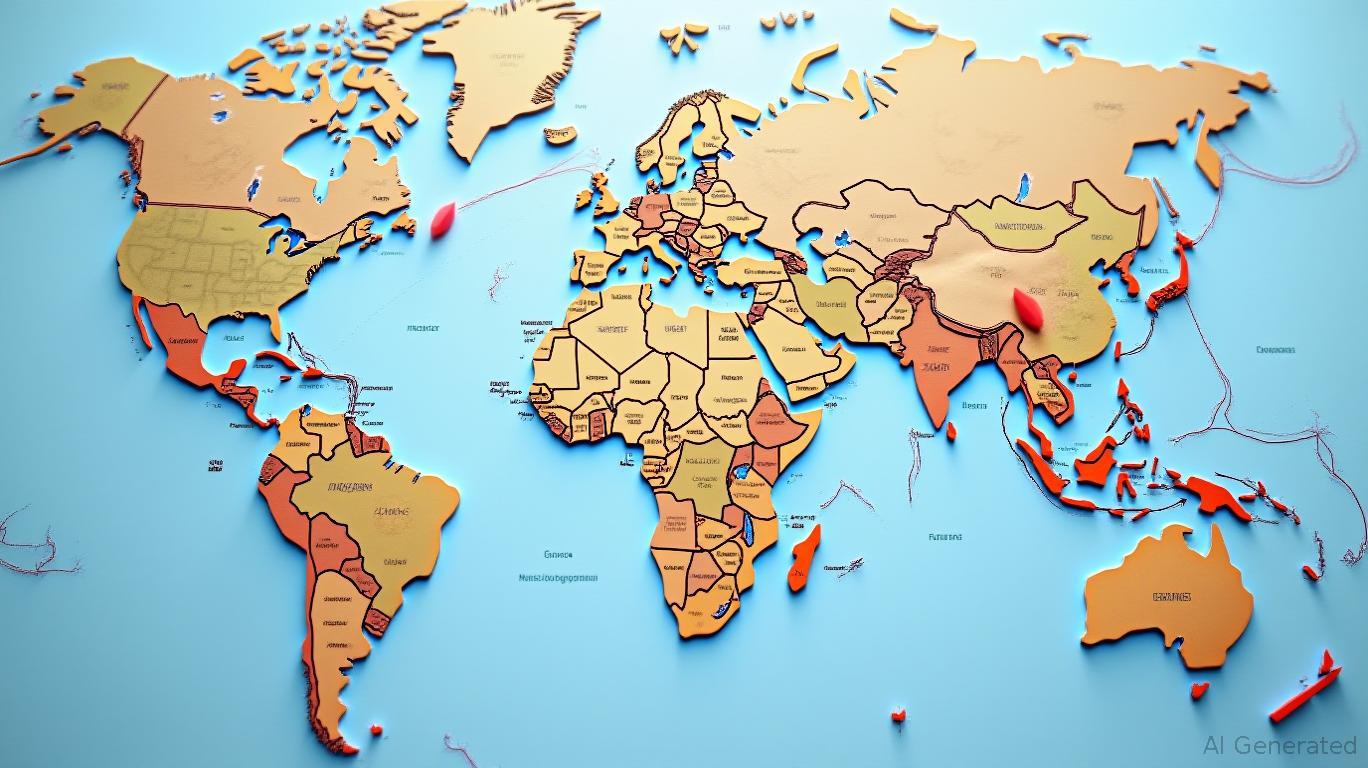Navigating Tariff Turbulence: Sectors Poised for Post-Resolution Growth
The global economy is at a crossroads. Tariff disputes and trade policy uncertainty, particularly between the U.S. and its key trading partners, have sent shockwaves through supply chains, inflated costs, and stifled growth. Yet, amid this volatility lies a critical opportunity: sectors that have been disproportionately impacted by tariffs are now primed for stabilization and resurgence once trade tensions ease. Investors who position themselves strategically in these industries today could reap significant rewards as the world emerges from this period of protectionism.

Automotive: The Road to Recovery
The automotive sector has been a prime casualty of tariff wars. U.S. tariffs of 25% on imported vehicles and parts have driven up production costs, squeezing margins and forcing automakers to either raise prices or absorb losses. However, companies with agile global supply chains—such as Toyota or Volkswagen, which source components across multiple regions—are better positioned to capitalize once tariffs subside. Lower costs could enable these firms to undercut competitors and reclaim market share.
Toyota's diversified supply chain has insulated it better than Ford's reliance on North American parts, suggesting that geographic flexibility is a key differentiator. Investors should prioritize automakers with manufacturing footprints in low-tariff zones or those negotiating trade agreements to secure preferential terms.
Steel & Aluminum: A原材料 Rebound
The reintroduction of 25% tariffs on steel and aluminum in early 2025 has driven up domestic production costs, particularly for construction and manufacturing. Yet, these tariffs have also accelerated innovation. Companies like Nucor (NUE), which focus on high-value specialty steels, are less vulnerable to raw material price swings. Meanwhile, aluminum producers in regions unaffected by U.S. tariffs—such as Rio Tinto (RIO) or Alcoa (AA)—could see demand surge as global trade normalizes.
As tariffs ease, the Metals Index is likely to stabilize, reducing input costs for industries like construction, which has already seen a 9% decline in U.S. housing starts due to inflated material prices.
Electronics: A Shift in Supply Chains
The U.S.-China tech war has forced companies to diversify manufacturing outside China, with Vietnam and Mexico emerging as key hubs. This disruption has created opportunities for firms like Taiwan Semiconductor Manufacturing (TSM), which now supplies 60% of advanced semiconductors to global electronics manufacturers. Post-tariff resolution, demand for chips could rebound sharply, especially if U.S. firms seek to rebuild domestic production.
Vietnam's exports have surged 22% while China's fell 15%, underscoring the permanence of trade diversion. Investors should look to companies in Southeast Asia that have secured long-term contracts with U.S. tech giants.
Textiles & Apparel: The New Global Factory
Textile producers in Least Developed Countries (LDCs), such as Bangladesh and Cambodia, have gained market share as U.S. tariffs on Chinese apparel imports pushed brands like Nike (NKE) and H&M to re-source. These LDCs now account for 18% of U.S. apparel imports, up from 12% in 2023. Post-tariff normalization, their cost advantage—wages in Bangladesh are 30% lower than in China—will keep them competitive.
Investors should favor vertically integrated apparel companies with LDC partnerships, as these firms will benefit from both tariff stability and low-cost production.
Pharmaceuticals: A Post-Tariff Renaissance
U.S. retaliatory tariffs on EU pharmaceuticals—a 25% tax on drugs like insulin—have inflated healthcare costs, but resolution could reverse this. Companies with manufacturing split between the U.S. and Europe, such as Pfizer (PFE), are insulated from unilateral tariffs. More importantly, a reduction in trade barriers could accelerate cross-border drug trials and approvals, boosting R&D efficiency.
Prices rose 8% during the dispute; a return to pre-tariff levels would free up consumer spending for other goods, further stimulating growth.
The Investment Case: Timing is Everything
The global economy is nearing an inflection point. With inflation peaking and business sentiment hitting cyclical lows, policymakers have a strong incentive to resolve trade disputes. The sectors outlined above—automotive, steel, electronics, textiles, and pharma—are all priced to reflect continued tariff pressure. Yet their fundamentals are resilient: they command critical market share in their regions, benefit from trade diversion, and have the scale to pivot once costs stabilize.
Now is the time to act. Investors who allocate capital to these sectors now—through targeted equity picks or ETFs like the iShares U.S. Steel ETF (SLX)—can position themselves to capture the upside when trade winds turn favorable. The next 12–18 months will likely see a reacceleration of global trade, and those who act swiftly will own the recovery.
In a world still reeling from protectionism, the path to profit is clear: invest in the industries and companies ready to thrive when the tariffs finally fall.

Comments
No comments yet